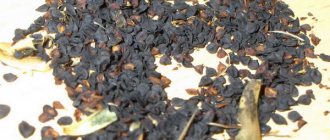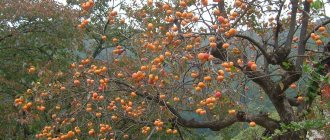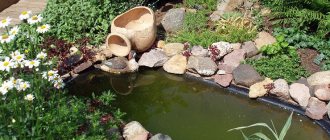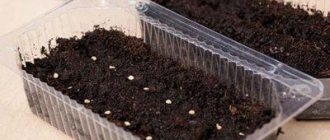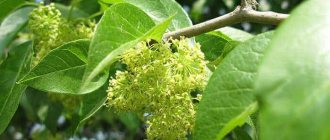Shrub roses can often be seen in landscape design, in city gardens and parks, as well as in garden plots in the southern regions. Gardens fragrant with such roses create a magnificent atmosphere of comfort and enchant in a special way. These flowering plants surpass all others in their diversity and luxury of shape, color, as well as the duration of abundant flowering. It is no coincidence that this flower is called the queen of all flowers.
Varieties of spray roses
Shrub roses come from the rosehip genus, which has over 200 thousand varieties. Having the same plant structure, they differ from each other in the shape of the flower, its color, and the duration of flowering. There are bush roses with all known colors - these are English, Canadian, grandiflora, park, ground cover, polyanthus, floribunda. Most often, gardeners prefer to grow the following varieties:
Flamingo
Refers to the type of hybrid tea roses. The flowers are single, goblet-shaped, 9-11 cm in size, pale pink in color with a very faint aroma. The bush grows within 1 m. New shoots are constantly formed on it, which soon begin to bloom. The Flamingo variety blooms from the second half of June until the first frost.
Lili Marlene
The most popular variety of the floribunda species. Bush up to 50 cm, very compact, covered with dark green foliage. Medium-sized flowers of rich blood-red color are collected in brushes of 3-15 pieces. without smell. The plant is strong, frost-resistant with a long flowering period.
Niccolo Paganini
A bush of medium height up to 80 cm. It blooms profusely with velvety-red flowers with a pleasant, pronounced aroma. Inflorescences can consist of 12 buds, which hold their shape perfectly. Plants of this variety easily tolerate the hottest summers and frosty winters, but are demanding of the soil - it must be especially fertile.
Versilia
The plant is strong, branched with a small number of thorns on erect shoots and has peach-colored flowers up to 12 cm in diameter. Grows up to 70 cm in width and up to 1 m 20 cm in height. With proper care, this rose will bloom profusely and for a long time.
Double Delight
It has two-color flowers - the ends of the petals are crimson, the middle is creamy white with a fruity strong aroma. As the flower grows, the crimson edging also increases. The diameter of the blossoming bud is 12-15 cm. The bush grows up to a meter wide with a height of 120 cm. It is resistant to frost.
Little White Pet
It belongs to the polyana roses obtained by crossing the multiflora of Japanese and Chinese dwarf. Low, compact, up to 60 cm, highly branched bushes. Inflorescences can have up to 50 small flowers. It is characterized by continuous flowering until the onset of frost.
Claire Austin
The bush, which has a round shape, grows up to 2.5 m. The branches reach 150 cm. A double pompom-like flower with the aroma of vanilla and meadow grass has a pale yellow color, which becomes even lighter as it blooms. Flowering period June-September.
Rose propagation
Reproduction methods
Roses reproduce by vegetative and generative methods. Vegetative methods include:
- propagation by dividing the bush;
- propagation by cuttings;
- reproduction by offspring;
- propagation by layering;
- propagation by grafting.
The generative method is propagation by seeds.
Growing roses from seeds
Usually the seed method is used when breeding new varieties and hybrids; it is practiced only for wild roses, and not all types of roses produce full-fledged seeds. Rose seeds are harvested during the reddening phase of the fruit - at the end of July or in August. They are cleaned and stored in damp sand for four months at a temperature of 2-5 ºC - for stratification. Next spring, they are soaked for several hours in heteroauxin or another root formation stimulator and sown to a depth of one to three centimeters, and mulched on top with humus or peat.
When the seedlings develop 2-3 leaves, they are planted in such a way that a distance of 6-8 cm is maintained between the seedlings, and 20 cm between the rows. In the summer, mineral fertilizers are applied to the soil in the garden bed at the rate of 40 g of nitrogen, 60 g of phosphorus and 10 g potassium per m². Throughout the next year, the seedlings are cared for by watering, weeding and feeding, and from August the grown seedlings can be used as a rootstock.
Cuttings of roses
One of the most reliable methods of propagation is rose cuttings, and if you don’t know how to grow a rose from cuttings, listen to our advice. Propagation of roses by cuttings involves the rooting of two types of stem cuttings - lignified and semi-lignified. This method is often used to obtain planting material when propagating park or indoor roses. At the beginning of flowering, the green shoots of roses begin to become woody, and at this time it is time to take cuttings.
Only green or too woody shoots are not suitable for cuttings.
The length of the cutting is about 8 cm, the thickness is about the size of a pencil, the straight upper cut should pass half a centimeter above the bud, and the lower cut, made at an angle of 45º, should pass directly under the bud. The thorns and leaves are removed from the lower part of the cutting, leaving only the two upper leaves, shortened by almost half. The lower cut is treated with phytohormones before rooting.
How to root a rose? Plant the cuttings at a distance of 15-30 cm from each other in a shady part of the garden in a ditch with sand 15 cm deep, press the sand around the cuttings, water the soil and cover the cuttings with film, building a greenhouse over them. Raise the cover from time to time to ventilate the cuttings, or make small holes in the film to allow the cuttings to breathe. Water and feed the cuttings, remove weeds and loosen the soil from time to time. If buds begin to form, remove them: what is important for cuttings now is not flowering, but the formation of a strong root system.
For the winter, cover the cuttings with a double layer of insulation and polyethylene on top. Next spring, remove the insulation and begin to accustom the cuttings to their habitat by slightly opening the film. The cuttings are grown in the growing bed for two years, and in the third year the matured seedlings are planted in permanent places.
Grafting roses
Roses are grafted onto young seedlings of wild species - rose hips. The best species for rootstock is considered to be the dog rose (Rosa canina) and about 20 of its forms, which have high winter hardiness and a powerful root system. Small-flowered, wrinkled, cinnamon, loose and other roses have also proven themselves well as rootstocks. Budding vaccination is carried out in the summer, in mid-July:
- clean the root collar of the rootstock from the soil, remove the side shoots;
- make a T-shaped cut on the root collar (vertical stick - 2.5 cm long, horizontal - 1 cm). Carefully pull apart the bark at the incision site so that the bud can be placed in the incision;
- Select a mature cutting from a varietal rose, remove the leaves and top from it, cut the eye from the cutting from bottom to top, grabbing a layer of wood. Carefully remove excess wood;
- insert the eye into the T-shaped cut on the rootstock, carefully remove all excess parts, wrap the grafting site tightly with budding film;
- after three weeks, check whether the bud has taken root with the rootstock: it should swell, but under no circumstances turn black.
On the eve of winter, hill up the grafted plant 5 cm above the graft. In the spring, carefully remove the soil from the grafted bud, remove the film, and cut the rootstock 1 cm above the graft. When the shoot from the grafted bud begins to grow, pinch it at 3-4 leaves. Take good care of your grafted rose, and by autumn you will have a powerful plant with a good crown, ready to be transplanted to a permanent location.
Dividing the bush
Only self-rooted (not grafted) roses are propagated in this way. In autumn or spring, before the buds open, dig up a bush and use a sharp, sterile instrument to divide it into parts so that each of them has its own roots and at least one shoot. Then treat the cuts with crushed coal and plant the cuttings according to the usual pattern. Polyantha roses and floribundas take root best after dividing the bush, and if you divided the bush and planted the divisions in early spring, you can still see abundant blooming of roses on these bushes this year.
Reproduction by layering
This way you can get new bushes from both your own rooted and grafted roses. For propagation, shoots growing at the root collar are used: in early spring, make circular cuts in the bark on such a shoot, bend it and place it in a pre-dug shallow groove, secure it in the middle with a wire staple or hook and throw loose, damp soil on top so that the top of the shoot remains on the surface . Tie the top to the peg, giving it a vertical direction.
Keep the soil above the cuttings slightly moist during the summer. In the fall, your cuttings will take root, but it will be possible to separate them from the mother plant only next spring.
Site selection and soil preparation
A comfortable place for a bush rose will be an area that is illuminated throughout the day without drafts or wind. It’s good if a light shade protects them in the midday sun.
It is better to plant roses in neutral, fertile, well-drained soil. Acid soil can be improved by adding lime, loamy soil - sand and manure, sandy loam soil - mineral fertilizers.
Planted roses take root well at 12-17 C soil.
Miniature roses in garden design
Miniature varieties of roses are used to decorate borders, hedges, rock gardens, and group plantings. Plants look good in flowerpots and hanging pots. The containers are located in greenhouses, on verandas and gazebos.
When planting different varieties, take into account the compatibility of shades. The most successful combinations are yellow, blue and red. White roses fit into any combination. The plant becomes the center of the composition or part of it.
Miniature varieties are placed against the backdrop of a lawn or taller plants. In multi-flowered flower beds, the rose is placed next to asters, lavender, gypsophila, and verbena. Abundantly blooming roses look advantageous against the backdrop of evergreen shrubs: barberry, thuja, cypress, juniper. Avoid combinations with bright flowers: begonias, petunias, salvia.
How to choose the right seedlings
The growth, development and flowering of a bush rose depends on the quality of the selected seedling. The main attention when choosing is paid to the roots. They should be smooth, dense with a large number of small roots on strong branches. There are no traces of overgrowth elimination.
A slightly peeled layer of dark bark should peel off easily, and juice should be released through the scratch. The root collar of grafted roses should be the same diameter before and after grafting, but not thicker than 9 mm. The ground part of the seedling is young shoots with small green leaves.
Repair roses
A feature of remontant varieties of roses is re-blooming, which occurs at the end of summer. It is usually not as lush and plentiful as the first one, but it is still very beautiful.
Georg Arends
The large buds resemble a pointed cone and bloom into elastic, shiny flowers with satiny petals. Repeated flowering of a rose with an unusual tart aroma occurs at the height of summer.
Sangria
Large inflorescences, abundant flowering, bright pink buds up to 8 cm in diameter - all this is Sangria rose. The flowers resemble two-tiered rosettes and look ideal in group plantings.
George Dixon
Crimson double flowers with a red tint are very bright and showy. The rose bush grows tall, and its essential oils are widely used in perfumery.
Eric Taberly
Like most remontant roses, this is a densely double variety with red fragrant buds. With proper watering in the southern regions, Eric Taberly can produce up to four waves of flowering.
Frau Karl Druschki
A snow-white remontant rose sometimes acquires a pinkish tint, which makes it even more delicate. The variety can bloom until late autumn, and the blooming buds remain until cold weather.
Preparing seedlings for planting
It is important to properly prepare the purchased planting material for planting. First of all: in the root system, by slightly pruning it, broken and damaged parts are removed, in the upper part of the plant, dried and weak shoots, buds or fruits are removed, leaving up to 5 buds on strong shoots and up to 3 on those that are weaker. The cuts must be smeared with garden varnish . To soften, the roots are kept in water for up to 10 hours, then covered in a mash of clay and mullein (2:1), diluted with water until it becomes sour cream.
Growing at home
Landing
The first transplant is carried out two weeks after purchase. Choose a small pot, since in a wide and large container the soil begins to turn sour. The substrate is selected to be nutritious and loose. Buy a special one for roses or make it yourself. To do this, mix:
- garden soil;
- peat;
- sand;
- humus.
The procedure is carried out as follows:
- A drainage layer of expanded clay or river pebbles is poured onto the bottom of the pot.
- A little damp soil is poured on top.
- The plant is pulled out of the old flowerpot and, together with a lump of earth, placed in a new one.
- The remaining space is filled with substrate.
- Then the plant is watered and placed in a permanent place.
We invite you to watch a video on how to plant an indoor rose in a pot:
How to care?
When growing roses at home, you must adhere to certain care rules.
Conditions of detention
- Place . The plant develops best on southwestern and southeastern window sills. The room is regularly ventilated, since the rose needs fresh air, but drafts are not allowed. In the summer, it is taken out onto the balcony or terrace.
- Temperature . In spring and summer, the optimal temperature is 14–25 degrees. In winter, it should not exceed 5–8 degrees. Overheating negatively affects the flower.
- Humidity . The rose grows comfortably at an ambient air humidity of at least 50%. Therefore, on hot summer days it is sprayed daily. During dormancy, spraying is reduced to 2-3 times a week.
- Lighting . The plant loves bright, diffused light. At midday, the rose is shaded from direct rays of the sun, otherwise the leaves may get burned. In the winter season and when kept on northern windowsills, the pot is additionally illuminated with phytolamps.
- Watering .
The rose needs regular watering. During the summer, daily. During dormancy, water moderately and less frequently, only to prevent the root system from drying out. Add water in small portions, as the plant is sensitive to excess moisture. After watering, the water is drained from the pan. Use warm, settled or filtered water. - Feeding . From the spring-summer period, the plant is fed 2 times a month. In winter, once a month. Mineral mixtures for roses are used for fertilizer. The flower also responds well to organic fertilizers, for example, mullein in solution.
- Trimming . When preparing a rose for the dormant period, the procedure of pruning the plant is carried out. Remove all weak shoots and parts. The stems are shortened to 10 centimeters. Remove dried flowers and leaves regularly. The procedure is carried out with a sharp knife. If pruning is not carried out, the stems become very elongated and flowering becomes scarce.
- Transplant . The procedure is carried out after pruning and only when the old pot becomes small for the rose. The pot is selected 5–6 cm larger than the previous one. The plant is watered abundantly and carefully pulled out of the container. Together with the earthen lump, they are transferred to a new pot and soil is added. Place in the shade. The first feeding is carried out a month later.
- Prevention from pests and diseases . Most diseases of bush roses occur due to improper care. To prevent the appearance of pests and diseases, you need to take care of the living conditions and conduct regular inspection of the plant.
Planting a bush rose
The most suitable time for planting is the last ten days of September, the first ten days of October. Having chosen the right place and prepared the seedlings, you can begin the main process - planting a bush rose. To do this you need:
- In the selected area, dig a hole with a diameter of up to 50 cm, 10-15 cm deep than the roots of the cutting. Be sure to loosen the bottom well;
- Mix the soil dug from the hole with compost in a 3:1 ratio, add a little (a glass) of wood ash;
- dissolve a heteroauxin tablet in a bucket of water, stir and fill the hole;
- lower the seedling into it and gradually cover it with soil mixture. Lightly compact each layer;
- Hill up the planted bush to a height of 15 cm;
- To water around the bush within a radius of 30 cm, make a small roller; it will prevent the water from spreading;
- water generously;
- provide shading of the planted bush for one and a half to two weeks;
- Roses planted in autumn must be covered.
When planting bush roses, it is necessary to maintain a distance between plants of 1.5 m. This is necessary for the formation of a large lush bush with flowering.
Landing rules
A few hours before planting, a seedling with an open root system should cut the roots by a third and soak it in a root growth stimulator. If the rose is in a container, you can immediately lower it into a hole that was filled with water shortly before planting.
If the seedling is quite large and, given that it will grow quickly, the distance between it and other bushes should be about one and a half meters.
In the planting hole, all roots should be placed freely, not bent or twisted. The gardener needs to ensure that the grafting site is buried approximately 5 cm.
The soil is brought into the hole in small portions so that it fills all the voids between the roots.
When the hole is filled to the top, the soil around the plant needs to be compacted with your palms. If a cold night is ahead, you should hill up the bush, creating a mound about 15 cm high.
Important! For better seedling growth, it is advisable to place a Heteroauxin tablet into a hole at a depth of 5-10 cm, and several Glyocladin tablets to protect the root system from rot.
Caring for a bush rose
For all their beauty, these flowers are simple and easy to grow. They require a bright, draft-free place with loose and nutritious soil. The main thing in caring for this type of roses is proper planting, systematic pruning, watering, and fertilizing.
Timely cutting of faded flowers will promote the formation of new buds.
Watering and fertilizing
For bush roses to grow and bloom, moderate watering is enough. The first watering after planting is carried out on the 3rd day, then as the soil dries. In spring, the plant grows intensively, so it requires more moisture; in summer, it will have to be watered more often during periods of heat and drought. You need to water at the rate of 10 liters per adult bush with a medium stream. It is better to carry out the watering process in the morning before the heat sets in or in the evening, but on condition that the water does not remain on the leaves. Closer to autumn, when the intensity of flowering decreases, watering is reduced to a minimum. Excess moisture can pose a threat to the development of fungus.
In the first year of growth, a bush rose requires an individual approach: it does not need to be fertilized, but it needs to be watered every second day.
Feeding a bush rose must begin in the second year of the plant’s life.
From spring to autumn you need to do 4 feedings:
- The 1st (double) is carried out in the spring at the beginning of the growing season; after pruning, roses are added per square meter. m of land 20 g of ammonium nitrate or ammonium sulfate, repeat application after 2 weeks;
- 2nd during the formation of buds. To feed you need to mix: potassium salt 10 g, ammonium nitrate 30 g, superphosphate 30 g. They can be replaced with universal fertilizer for roses, it is applied according to the instructions;
- 3rd - after the end of flowering, fertilizing is carried out with the same complex fertilizers as the second. And from the last ten days of July, fertilizing with nitrogen stops.
- 4th - in September you need to feed with superphosphate with potassium salt up to 40 g - sq. m. m.
It is good to alternate mineral fertilizers with organic ones - wood ash, slurry, chicken droppings.
Correctly trim and form the bush
A bush rose has several inflorescences on one stem, this is its main feature and difference from hybrid roses. Therefore, pruning should ensure the formation of a lush bush with the maximum number of inflorescences. The best time for pruning is spring, at the onset of the growing season, but before the formation of green mass. In autumn, only broken and dried branches are removed.
In the first year of planting, during the first attempt at flowering, the tiny buds that appear are removed. During subsequent flowering, they can be left. It is necessary to pinch strongly growing shoots. In the second and subsequent years.
Depending on the size of the bush, the intensity of its growth and the variety of rose, there are types of pruning:
- Short - 2-3 short shoots remain on the bush. Used for heavily bushy roses;
- Medium - the stems are shortened by half, leaving 5-6 shoots up to 30 cm in height at the base. This species is used for pruning many groups except park and alpine ones;
- Long - as a result, stems with 10 buds remain at 2/3 of its length. The main thing is that the last bud is outside. Light pruning can be applied to all types of bush roses. It promotes earlier flowering. The disadvantage is that the use of several such prunings will lead to loss of bush shape and abundance of flowering.
- Combined pruning - used by experienced gardeners to achieve constant flowering of bush roses.
After completing any type of pruning, the cut areas should be treated with garden varnish and green debris should be removed from the area. Such actions are part of preventive measures in the fight against rose diseases.
Preparing for winter
The end of October is the time to prepare the bush queen for wintering. Depending on how she survives the winter, her well-being next year will depend. The preparation process has its own distinctive features:
- pruning and covering the bush in a timely manner - the prematureness of this procedure will disrupt natural processes and only cause harm to the rose;
- uncut fruits after flowering will stop the growing season, which will allow you to survive the winter well;
- You need to hill up the bush with clean sand, since the soil lying next to the roses may contain fungal spores and bacteria.
Do not use sawdust or peat for hilling. Having frozen, they will become a barrier to the entry of spring heat into the root system - this will disrupt the awakening process and lead to the death of the plant.
How to propagate bush roses
You can propagate roses in the following ways:
- generative (seeds)
- vegetative (dividing the bush, cuttings, layering, grafting).
Features of cultivation
Shrub roses generally require minimal care and have good frost resistance and resistance to common diseases. At the same time, they are very decorative and have a wide range of applications in landscape design. It is enough to choose the right place for planting and provide the plants with basic needs: watering, fertilizing and pruning.
When choosing a site for a seedling, it is recommended to give preference to well-lit spaces. It is advisable that the plant be exposed to bright sunlight for at least five hours a day, especially in the first half of the day, and in the hottest afternoon hours it should be covered by light partial shade. It is important to ensure good air circulation, which will help avoid excess humidity and prevent the development of fungal diseases. If strong winds often blow in the growing region, then you need to organize protection from drafts, for example, by planting bushes next to buildings or large garden plants.
Depending on the size of the plant, scrubs are used for solitary plantings, the formation of hedges, mixborders and other types of flower beds
In the Moscow region, the best time to plant roses is autumn, from approximately September 10 to mid-October. The placement density for group planting depends on the characteristics of a particular variety and averages 4-6 bushes per square meter, and for ground cover varieties - from 2 to 5 plants.
Shrub roses, like representatives of other groups, need to be provided with regular moderate watering at the root. Overmoistening, as well as lack of moisture, has an adverse effect on growth and flowering and can provoke infection by fungi.
Sanitary and formative pruning is usually carried out in the spring, removing damaged and diseased branches, as well as those that grow inside the crown of the bush. In the summer, faded flowers are trimmed so that the bush looks neat and new buds are more actively formed on the shoots. Autumn pruning is carried out in order to prepare the plant for the dormant period and for the convenience of organizing winter shelter.
Miniature bush roses are perfectly suited to growing as indoor plants in small containers.
The possibilities for using scrubs in the garden are almost unlimited. They can be used to decorate walls and fences, create hedges, mixborders and ridges, planted in groups or solitary. Ground cover varieties with a wide growing area allow the formation of luxurious flower carpets in personal plots. At the same time, they perform not only a decorative function, but also suppress the growth of weeds. Many varieties included in the Modern Shrub group have spectacular large flowers that remain fresh for a long time after cutting and are perfect for making lush bouquets.
Pest and disease control
Shrub roses can be attacked by pests: gnawing - beetles, sawfly larvae, caterpillars and sucking - cicadas, mites, whiteflies, scale insects, aphids. Biting insects eat parts of the rose, which slows down the development and flowering of the plant. The suckers pierce and suck out plant sap from the ground parts of the rose.
The fight against harmful insects can begin as they appear. But experts recommend carrying out preventive treatment in the spring before the buds swell.
Unfavorable conditions lead to diseases such as: powdery mildew, downy mildew, rust, chlorosis. It is necessary to organize measures to determine the causes and eliminate them.
It is difficult to find a person who would not be admired by the beauty and pleasant aroma of roses. By choosing the right place for these magnificent flowers and providing them with simple but proper care, you will receive great pleasure from the unique riot of colors and aroma.
What kind of variety is this, characteristics of the plant
Shrub roses have been known since ancient times. They were grown by the Greeks and Romans to decorate the area near their homes. The plant belongs to the Rosehip family and is distinguished by its beauty with fairly simple care. Thanks to this, it is popular as a decoration for a summer house or private home.
Shrub rose
Key Features
The plant has a varied appearance. Moreover, this applies not only to colors, but also to the shape and size of the crown. Depending on the type, it can be very lush or consist of several branches. The same applies to the growth of a rose bush. Some varieties can reach a height of up to 3 meters, others barely reach 50 cm. The branches of each plant are divided into main and annual, which grow again every spring.
Additional Information. Depending on the species, the peduncle can be from 15 to 100 cm in height.
As for the buds, they can have more than 100 petals. The main flower sometimes grows up to 20 cm in diameter. Roses grow either singly or in inflorescences. Their shades vary depending on the variety. At present, probably, only the variety with bright blue buds has not yet been bred. However, species have appeared in which the flowers change color depending on the time of year.
Some varieties of bush roses resemble wild roses in their appearance, others bloom only once, and then become just a green decoration for the area. Other varieties delight gardeners with bright flowers every year.
The main advantages of flowers:
- High frost resistance compared to other types of roses.
- Unpretentious in care.
- With the help of bush roses you can create chic green hedges.
However, they also have disadvantages. The main ones are:
- It is necessary to prune the bushes every year.
- Although the plant has high frost resistance, it needs to be prepared for winter. And the large size of the bush makes it difficult to wrap up before cold weather.
By winter we will have to create three-dimensional structures
Polyanthaceae
They were developed in France in 1873. These are multi-flowered roses, which according to modern classification are classified as bush roses. The plant is usually short (40-60 cm), but is distinguished by very dense foliage and small flowers. During flowering, they completely cover the plant; up to 50 flowers can form on one inflorescence.
They have high rates of frost resistance and vitality. Most varieties are resistant to fungal infections. Polyantha roses are easy to grow from seeds; in adulthood, the shrub is not afraid of shade and drought. The flowers are suitable for garden decoration or use in bouquets. Popular varieties:
- The Snow Queen . Cultivated since 1901. The height of the bush reaches 1 m, the shoots grow straight. The buds are initially pinkish in color and become bright white as they bloom. The flowers are odorless. The main disadvantage of the variety is low resistance to powdery mildew;
- Alfred Colomb . The variety is represented by a vigorous bush, on which large double buds are formed in large numbers during flowering. The flowers are strawberry-colored;
- Goldstein . The branched bush reaches 80 cm in height. The leaves are very large and leathery. During flowering, cup-shaped buds cover the entire bush and exude a pleasant aroma. The petals are painted in a dark crimson hue.
The modern division of all garden roses was approved only in 1976. Due to their similarity with hybrid tea varieties, some polyanthus varieties may simultaneously belong to two groups.




